Rx Pad
Question: Why is a hyperbaric facility maintenance program necessary?
The development of a comprehensive maintenance program for a hyperbaric system and its supporting equipment is essential for a safe and cost-effective operation. The chamber and its operational systems, the chamber room, and the equipment used in and around the chamber should be maintained at the highest operational level. This should also include the cleanliness of all elements of the interior and exterior systems.
Components of a Maintenance Program
Why is a maintenance program necessary?
It is important to understand and comply with applicable codes and standards in order to reduce the potential for:
- Chamber mishaps and patient/staff injury
- Costly repair expenses
- Lost revenue due to unexpected chamber shutdown
The National Fire Protection Association (NFPA) publishes one of the most important standards that apply to hyperbaric facilities. Chapter 14 of the NFPA 99 "covers the recognition of, and protection against, hazards of an electrical, explosive, or implosive nature, as well as fire hazards associated with hyperbaric chambers and associated facilities that are used, or intended to be used, for medical applications and experimental procedures at gauge pressures from 0 kPA to 690 kPA (0 psi to 100 psi)." Section 14.3.1.3.2 of the NFPA 2012 Edition specifies responsibility for administration and maintenance requirements, "each hyperbaric facility shall designate an on-site hyperbaric safety director to be in charge of all hyperbaric equipment and the operational safety requirements..." It continues on to explain that "the safety director shall participate with facility managment personnel and the hyperbaric physician(s) in developing procedures for operation and maintanence of the hyperbaric facility."
The Undersea and Hyperbaric Medical Society (UHMS) Guidelines for Hyperbaric Facility Operations (2004 edition) recommends minimum safety program elements:
- Documented safety procedures, which must address:
- General facility safety
- Specific chamber related operational safety procedures such as fire in the chamber and/or the area surrounding the chamber, patient evacuation, contaminated air, equipment failure
- How to deal with physiological reactions such as ear pain, sinus pain, oxygen toxicity reactions, claustrophobia
- Documented recurring in-service training for all full-time and part-time hyperbaric facility staff on selected safety topics. Training sessions shall consist of fire drills, mock patient emergencies, simulated equipment failure, contaminated air, updates on codes and standards, etc.
- Documented preventive maintenance program executed either by local technical personnel or by a third-party maintenance contractor.
- Documented major maintenance program for specific hyperbaric facility components such as compressors, control components, fire suppression system components, etc (as appropriate).
Chamber mishaps and patient/staff injuries serve as paramount reasons for establishing a comprehensive maintenance program. Catastrophic accidents such as the loss of chamber pressure due to acrylic cylinder or viewport failure, fire due to faulty equipment, or injury due to faulty instrumentation, all serve as reminderes that the hyperbaric environment is unforgiving. Even the inadvertent activation of the Fire Suppression System (FSS) in a multiplace system has the potential to injure a patient by possible wound contamination. For this reason alone the FSS tank and headers in a multiplace system should be drained and refilled at least monthly to reduce the amount of contaminants present in the FSS water reserve. Consequently, when setting up a maintenance program many of the activities can be developed to revolve around the prevention of mishaps.
We will continue the discussion on establishing a hyperbaric facility maintenance program in subsequent blog articles. Remember to subscribe to our blog to be notified when new articles are released!
NOTE: This article focuses on the establishment of a maintenance program. The examples presented within are not meant to serve as an in-depth or detailed account of every maintenance item that may be preformed for a hyperbaric maintenance program.
References: Workman, Wilbur T. Hyperbaric Facility Safety: A Practical Guide. Flagstaff, AZ: Best Publishing Company 2010. Workman, Wilbur T. UHMS Guidelines for Hyperbaric Facility Operations. Kensington, MD: Undersea and Hyperbaric Medical Society: 2004.
MORE INFORMATION
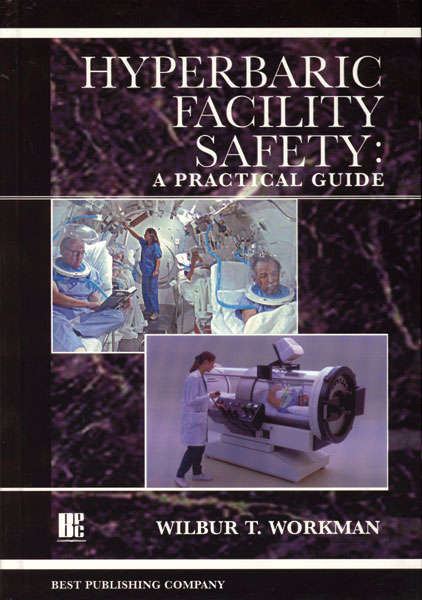 |
Hyperbaric Facility Safety: A Practical Guide (book) This textbook was written with the objective of creating a comprehensive source to assist established hyperbaric programs, serve as a safety primer for those developing programs, and help cultivate the mindset vital to maintaining a safe environment for staff and patients. |
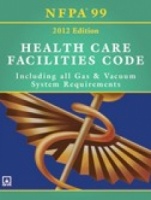 |
NFPA 99: Health Care Facilities Code, 2012 Edition (book) Move up to a new level of protection and keep facilities up-to-code and patients and staff safe from harm. The 2012 NFPA 99 is essential for engineers, facility managers, AHJs, plumbers, gas and vacuum system installers, designers, verifiers, security personnel, insurance companies, and manufacturers. |
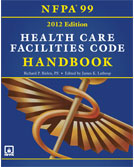 |
NFPA 99: Health Care Facilities Handbook, 2012 Edition (book) With a shift to a risk- vs. occupancy-based approach; updates to medical gas and vacuum system content; new chapters on security, fire protection, and information technology; and other major changes, you're bound to have questions about the 2012 NFPA 99: Health Care Facilities Code. Don't risk confusion or mistakes that could jeopardize patient, staff, and facility safety. Consult this essential Code companion to get up-to-speed on new requirements fast so you can do jobs correctly, comply right the first time, and protect lives |
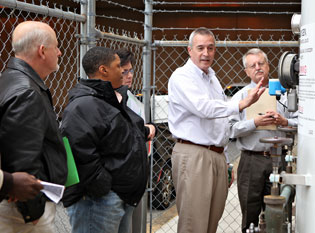 |
Hyperbaric Safety Director Role 16.0 hour credit course, live classroom instruction This program benefits those new to the safety director position by orienting them to the responsibilities as defined by the NFPA, UHMS and other organizations. In addition, the course is a great review for current safety directors and seasoned technicians by providing updates to NFPA code and industry standards. |
|
"Let's Talk Safety -Hyperbaric Facility Safety" (short video) Hyperbaric facility safety is everyone's responsibility and Best Publishing Company is here to support your facility safety planning, every step of the way. This short 3 minute video gives you a tour of the resources available through Best Publishing Company to support your hyperbaric facility safety needs. Watch Now! |
|
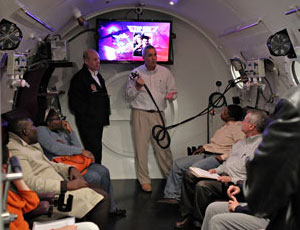 |
Introductory Course in Hyperbaric Medicine 40.0 hour credit course, live course |
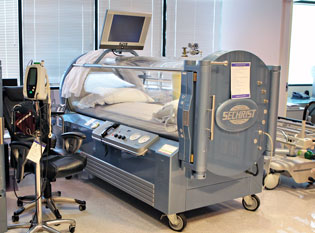 |
Hyperbaric Medicine Mechanisms of Action and UHMS Accepted Indications (online credit course) Hyperbaric Oxygen Therapy Indications (live credit course) This 6.0 hour credit course is now available both live and online |
When you subscribe to the blog, we will send you an e-mail when there are new updates on the site so you wouldn't miss them.


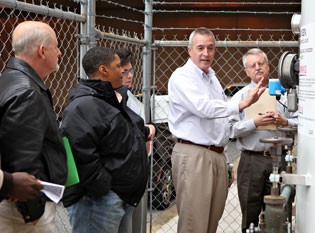
Comments